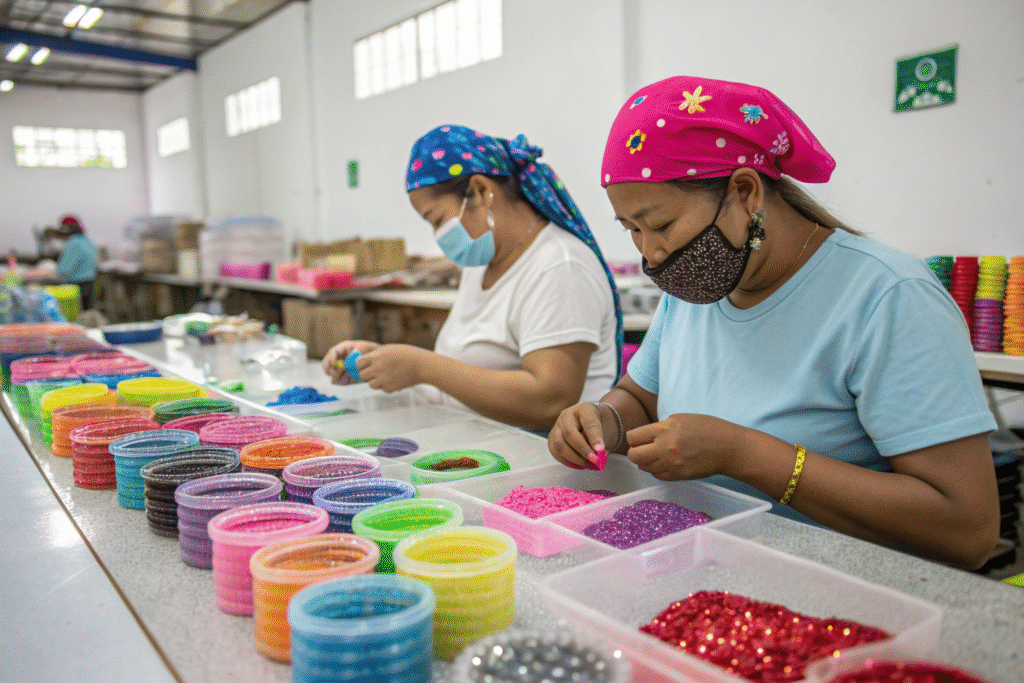As a hair accessories manufacturer in China, I know one of the biggest concerns today is sustainability. Traditional plastic glitter has been criticized for microplastic pollution, especially in products like hair clips. Buyers in the U.S. and Europe now demand biodegradable alternatives. If we want to stay competitive, sourcing biodegradable glitter is essential.
The good news is that manufacturers can now source plant-based glitter from trusted suppliers in China and abroad. This makes it possible to design sparkling hair clips that align with eco-friendly regulations and consumer values.
The shift to sustainable glitter not only satisfies eco-conscious clients but also prepares us for new international regulations like the EU’s restrictions on microplastics. Below I share practical insights on sourcing, certifications, and integration into hair clip production.
What Materials Are Used in Biodegradable Glitter?
Biodegradable glitter is made from eucalyptus cellulose, wood pulp, algae, or PLA (polylactic acid). These renewable materials break down naturally in soil or water, unlike PET or PVC glitter.
Most biodegradable glitter is certified under EN13432, ASTM D6400, or TÜV standards. This means the glitter can degrade within a few months under composting conditions without leaving harmful residue.
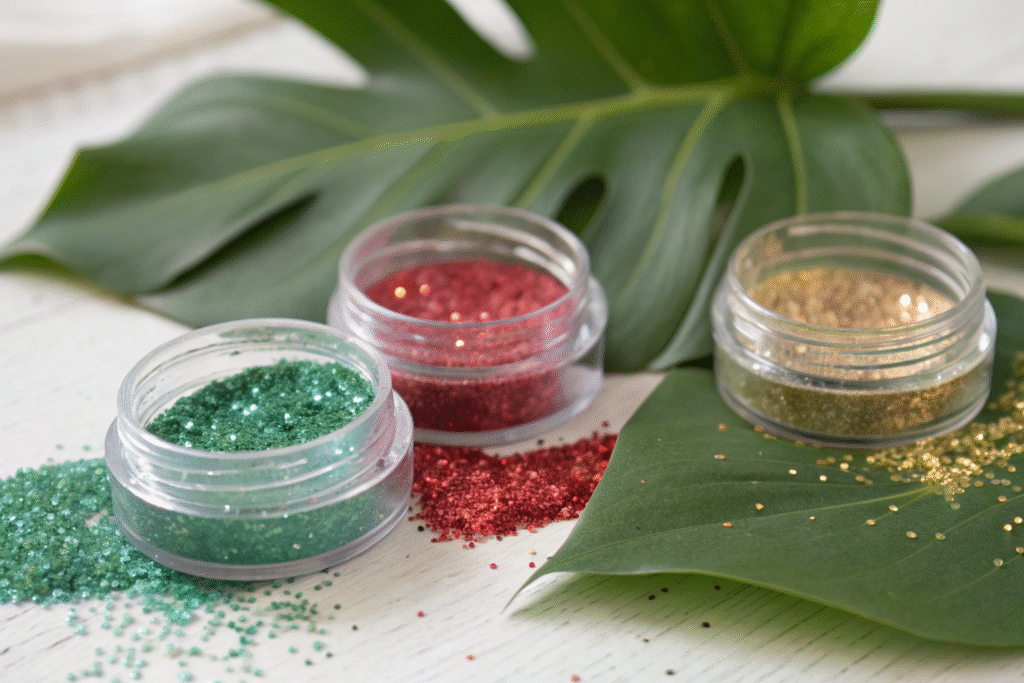
Why Choose Plant-Based Glitter?
Plant-based glitter avoids microplastic pollution and is safer for hair and skin. Many beauty brands now use Bioglitter®, a pioneer in plastic-free sparkle. Another trusted supplier is Meadowbrook Inventions, known for cosmetic-grade eco glitter.
How Do Certifications Protect Buyers?
Certifications like EN13432 and ASTM D6400 confirm biodegradability and safety. When sourcing, I always request documents to avoid risks such as shipment rejections in Europe.
Where Can Manufacturers Buy Biodegradable Glitter?
Manufacturers usually choose between Chinese suppliers and international eco-brands. Both options have advantages depending on budget, volume, and certification needs.
In China, factories like CrownRoad (GlitterPowder.com) and Guangdong GuanHong Glitter Technology offer customizable colors, shapes, and bulk discounts. For premium sourcing, Bioglitter® in the UK and Meadowbrook in the U.S. remain leading options.
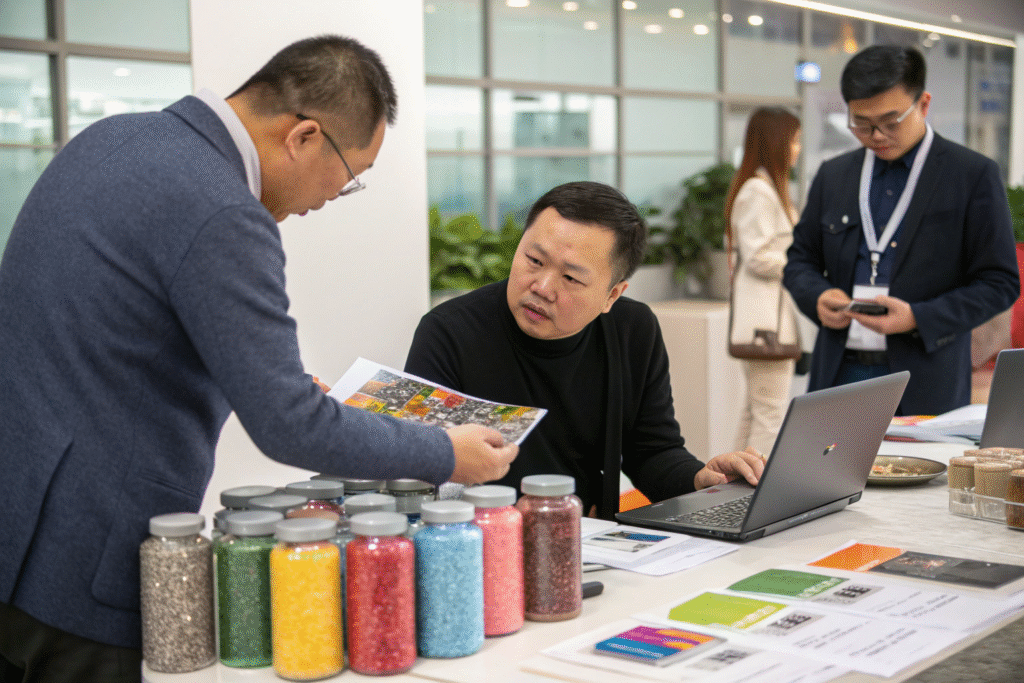
Which Chinese Suppliers Are Reliable?
Suppliers on Made-in-China and Alibaba list hundreds of manufacturers. The most reliable are those with proven export experience and cosmetic-grade testing. CrownRoad, for example, supplies glitter widely used in hair clips.
What About International Eco-Brands?
Bioglitter® offers high-standard plant-based glitter approved by EU regulations. Meadowbrook also has long-established eco product lines. These suppliers cost more but help secure trust with premium retailers.
What Standards Should Manufacturers Check Before Buying?
With stricter EU rules on microplastics, compliance is critical. Manufacturers must check certifications, safety, and chemical restrictions before sourcing.
Essential standards include biodegradability certification, cosmetic safety, and REACH compliance. Without them, products risk being banned or recalled.
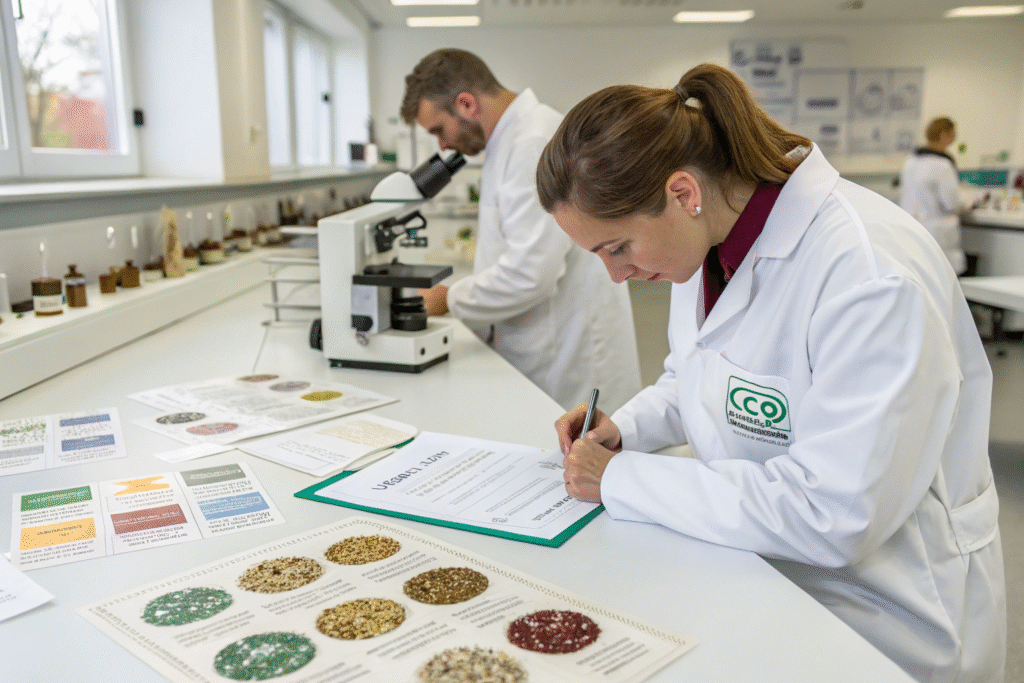
Which Certifications Are Essential?
Glitter for hair clips should meet REACH in Europe and FDA approval in the U.S. Buyers should confirm EN13432 or TÜV certification and request test reports like MSDS sheets.
How Do Regulations Impact Hair Accessories?
The EU has banned non-biodegradable glitter in cosmetics, and more restrictions are expected by 2027. According to Vogue, brands that do not switch risk losing market share. For hair clips, this means shifting production now is urgent.
How Can Biodegradable Glitter Be Integrated Into Hair Clip Production?
Integrating biodegradable glitter into hair clip production requires testing adhesives, ensuring durability, and maintaining sparkle quality.
Factories must use water-based adhesives compatible with cellulose glitter while passing pull tests and wear resistance. Packaging should also match eco-friendly values with recyclable boxes or compostable bags.
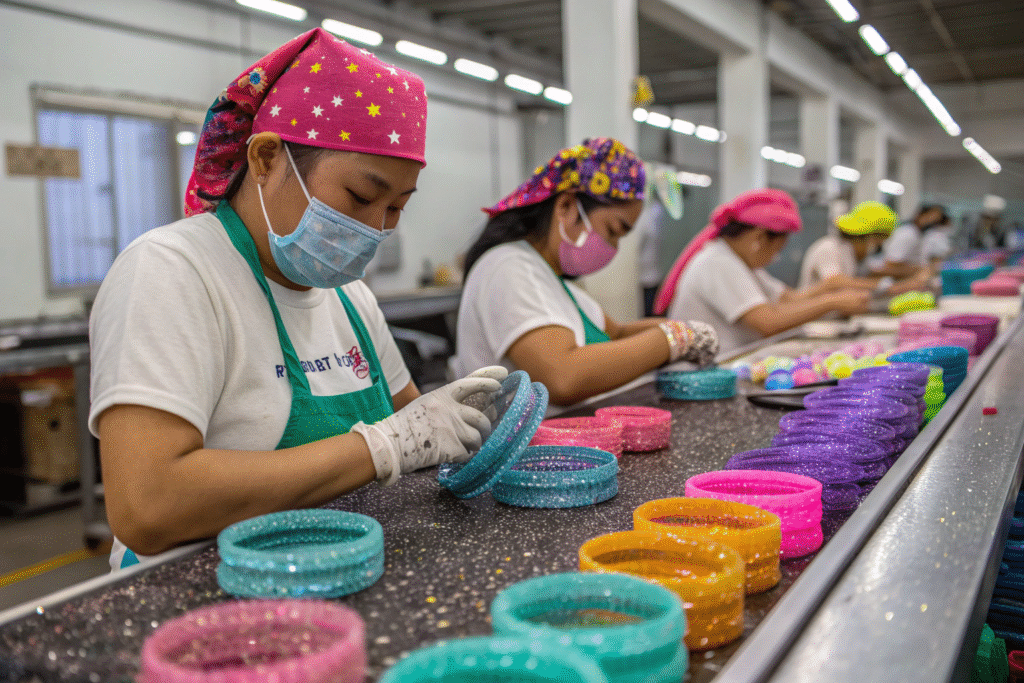
What Production Adjustments Are Needed?
Water-based adhesives prevent damage to cellulose glitter. Factories like GuanHong Glitter already test binding methods. Buyers should request samples before mass orders. EcoEnclose also provides compostable packaging to complement eco-friendly hair clips.
How Can Brands Market Eco-Glitter Hair Clips?
Marketing should highlight biodegradability and certifications. Many brands use “plastic-free sparkle” as a selling point. On Etsy, eco-glitter hair clips already attract buyers, proving strong demand and offering sales potential.
Conclusion
Switching to biodegradable glitter for hair clips is not just a trend—it is a business necessity. By sourcing from certified suppliers, testing production methods, and aligning with eco-friendly regulations, manufacturers can gain a competitive edge in Europe, the U.S., and beyond.
If you want to explore eco-friendly glitter hair clips for your brand, we at Shanghai Fumao can help with product development, bulk production, and international shipping. Contact our Business Director Elaine at elaine@fumaoclothing.com to start your sustainable headwear collection today.

